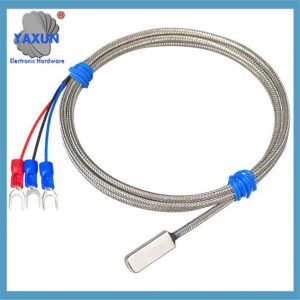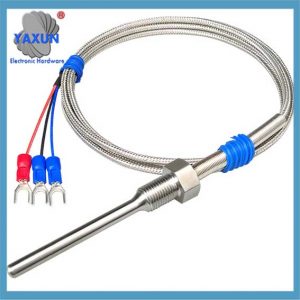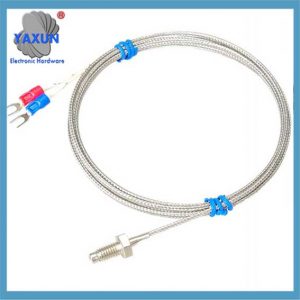A pellet stove is a device used to heat or calcine solid pellets, usually used in industrial production and laboratories. During the operation of a pellet stove, a temperature sensor is a very important component used to measure the temperature inside the furnace to ensure temperature control and stability inside the furnace.
For a pellet stove, choosing a suitable temperature sensor is very critical. According to the materials and operating requirements of the pellet stove, common types of temperature sensors include thermocouples and thermistors. Below we will introduce the application of these two sensor types in pellet stoves respectively.
热电偶是一种常用的温度传感器,基于两种不同金属之间的热电效应. 热电偶测量范围宽、稳定性好, 适用于高温环境下的温度测量. 颗粒炉通常需要测量更高的温度, 所以热电偶是常见的选择. 常见的热电偶类型包括K型, N型, 和S型, 可在不同温度范围内提供精确的温度测量.
In addition to thermocouples, thermistors are also common temperature sensors, which measure temperature based on the characteristics of the material’s resistance changing with temperature. In pellet stoves, commonly used thermistor materials include platinum resistors and nickel resistors. Platinum resistors have high measurement accuracy and stability, and are suitable for a wide temperature range. Nickel resistors are suitable for lower temperature ranges, but their prices are relatively low, making them suitable for some occasions with higher economic requirements.
Pellet stove oven temperature sensor
For pellet stoves, the specific selection of temperature sensors also requires other factors to be considered, such as sensor size, 响应时间, 抗干扰能力, ETC. 此外, it is also necessary to consider the specific process requirements of the pellet stove and the requirements of the monitoring system. 一般来说, 100k sensors are more sensitive and can detect a wider temperature range, while 50k sensors are more stable and reliable. The specific choice of sensor depends on the specific needs and design requirements of the pellet stove.
简而言之, pellet stoves usually need to measure higher temperatures, and common types of temperature sensors include thermocouples and thermistors. The specific selection of temperature sensors requires comprehensive consideration of multiple factors, including measurement range, 精度要求, process requirements, ETC. It is recommended to select temperature sensors under the guidance of suppliers or professionals.
 English
English Afrikaans
Afrikaans العربية
العربية বাংলা
বাংলা bosanski jezik
bosanski jezik Български
Български Català
Català 粤语
粤语 中文(简体)
中文(简体) 中文(漢字)
中文(漢字) Hrvatski
Hrvatski Čeština
Čeština Nederlands
Nederlands Eesti keel
Eesti keel Suomi
Suomi Français
Français Deutsch
Deutsch Ελληνικά
Ελληνικά हिन्दी; हिंदी
हिन्दी; हिंदी Magyar
Magyar Bahasa Indonesia
Bahasa Indonesia Italiano
Italiano 日本語
日本語 한국어
한국어 Latviešu valoda
Latviešu valoda Lietuvių kalba
Lietuvių kalba македонски јазик
македонски јазик Bahasa Melayu
Bahasa Melayu Norsk
Norsk پارسی
پارسی Polski
Polski Português
Português Română
Română Русский
Русский Cрпски језик
Cрпски језик Slovenčina
Slovenčina Slovenščina
Slovenščina Español
Español Svenska
Svenska ภาษาไทย
ภาษาไทย Türkçe
Türkçe Українська
Українська اردو
اردو Tiếng Việt
Tiếng Việt



